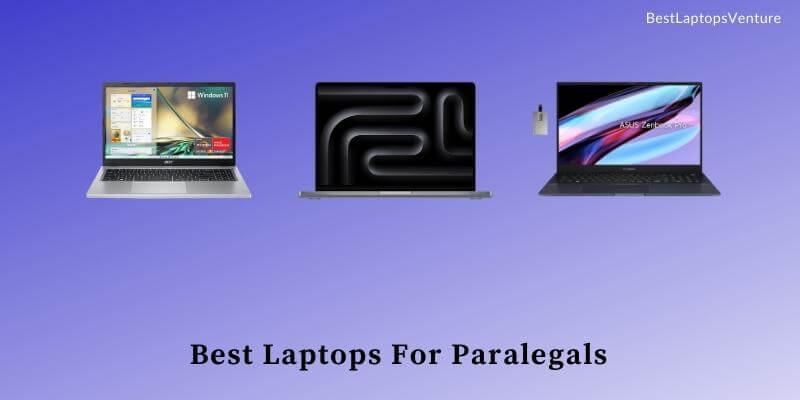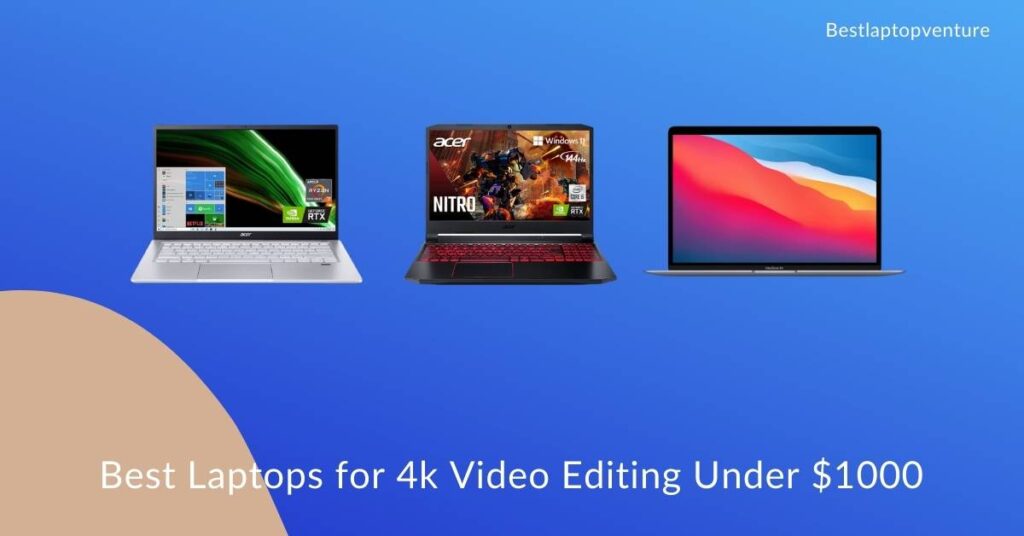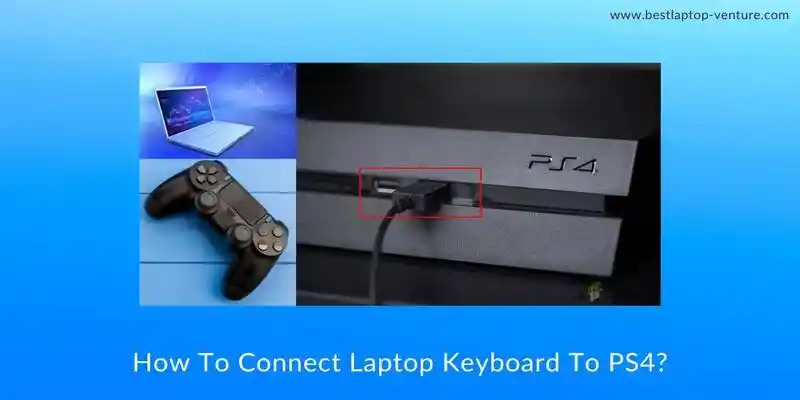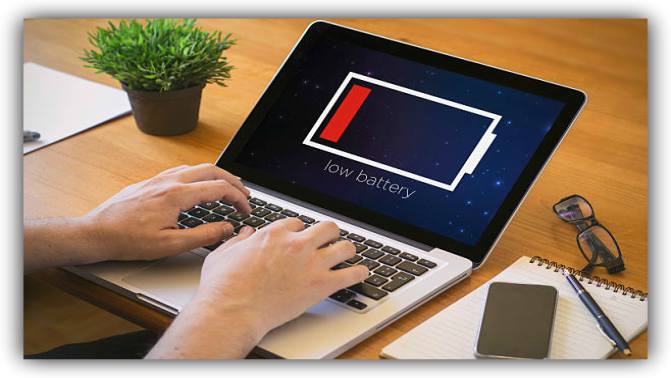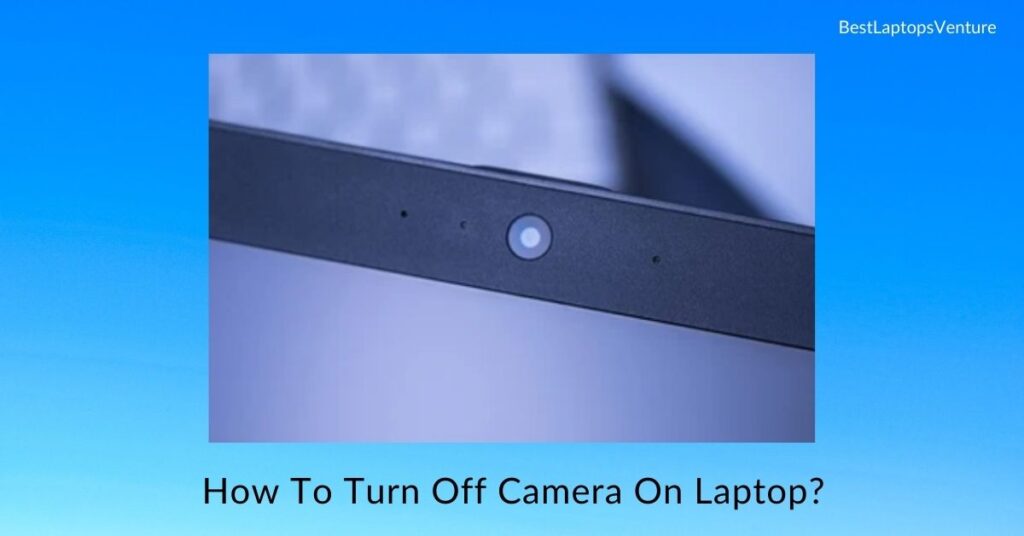
Nowadays, the majority of laptops include an integrated webcam – some with a normal camera for Skype and other web-conferencing, while others include infrared cameras for Windows Hello facial recognition.
Additionally, almost all laptops include a built-in microphone that may be utilized in combination with the camera.
If you’re the type of person who never uses their laptop’s camera or microphone, you may be wondering how to disable them. Why?
Certain viruses can take control of the hardware and keep it running even while it is not in use. Even if you’re simply concerned about your privacy being eroded, these instructions will teach you how to disable your Windows 10 laptop’s built-in webcam and microphone.
This article describes how to disable your camera in Windows, either completely or for a chosen few applications. Instructions for Windows 11/10, Windows 8, and Windows 7 are included.
How To Turn Off Camera On Laptop? Easy tips and tricks
Without hesitation, you should deactivate or disguise your laptop’s webcam.
There is no need to have an unsecured recording device continuously available on your laptop, especially in light of the countless reported examples of webcam espionage.
It’s so simple that there is no excuse not to do so. Consider the following.
Installing and Activating Antivirus/Anti-Malware Software
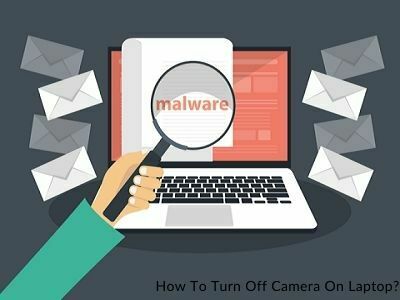
While this should be a routine part of every Windows user’s upkeep, it is one method of ensuring that no virus is attempting to hijack your webcam.
Avast and Malwarebytes are two popular free security software solutions. Additionally, it is recommended to maintain typical, safe Internet usage practices (e.g. not opening strange mail attachments).
Determine which applications are utilizing your webcam.
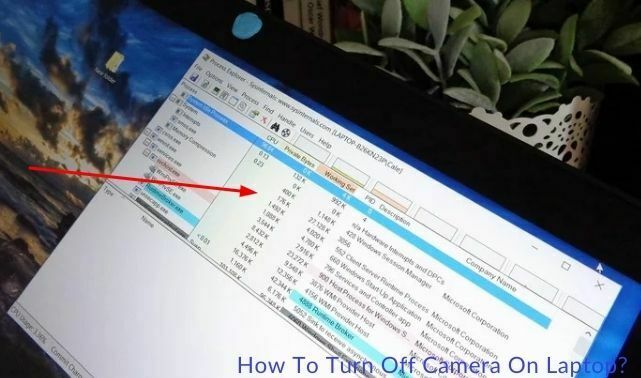
If you find yourself in a situation where your camera’s LED is on but you are not using any applications, it’s useful to know how to determine which programs are utilizing your webcam.
All you have to do is download Process Explorer, get the device name for your webcam, and search for it.
In Windows 10 or Windows 8, you may disable the webcam.
Here’s how to completely disable the camera on your Windows 10 laptop computer:
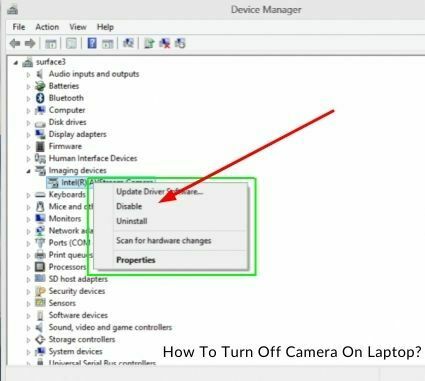
- Select Device Manager by right-clicking the Windows 10 Start button.
- Select the arrow to expand Imaging devices in the newly opened Device Manager window.
- Select Disable device by right-clicking the camera’s name.
- When prompted for confirmation, select Yes.
All applications and services have been disabled from using your camera. To re-enable it, return to the Device Manager window and right-click your camera’s name.
Disable Webcams for Selected Services in Windows 10
If you don’t want to totally block your webcam, you may decide which apps and services are permitted to access it.
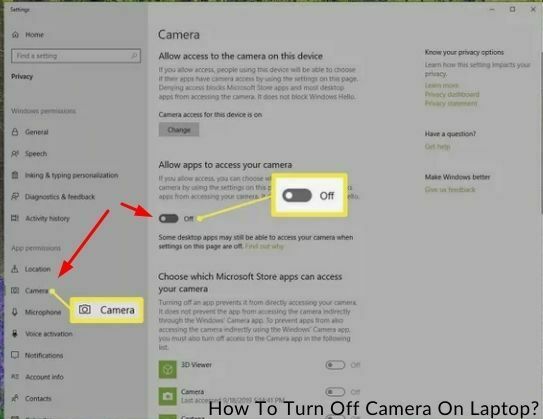
In Microsoft Windows 10:
- In the Start menu, click the Settings icon.
- Select Privacy.
- Turn on Allow applications to access your camera in the Camera section to provide access to certain apps and services.
- Slide the slider next to each app or service in the list to provide access to particular applications and services while denying access to others.
This is great if you simply want to restrict camera access to social media or chat services that your children frequent.
How to Turn Off a Webcam on Windows 7
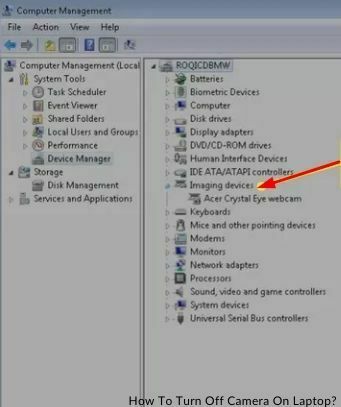
To deactivate the camera on your PC in Windows 7:
- Select Control Panel from the Start menu on your desktop.
- Choose your hardware and audio.
- Select Device Manager from the menu.
- Double-click your webcam in the list of Imaging Devices.
- To disable the camera, click the Driver tab and then pick Disable.
- When prompted to disable your webcam, select Yes.
Cover the Webcam with Tape
[amazon box=”B0000DH4ME”]
This third approach is very low-tech, but it works if you are unable or unwilling to tamper with software or the settings on your laptop.
Simply cover the lens with a piece of duct tape or masking tape. The disadvantages, of course, are mostly cosmetic, including the possibility of sticky residue remaining after the tape is removed.
Disconnect It
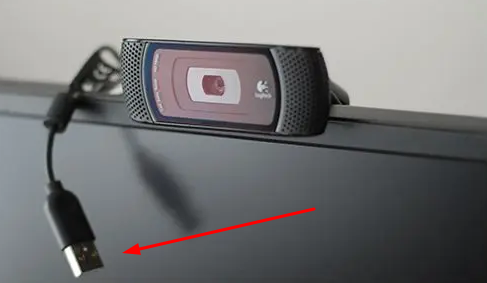
The simplest approach for desktop users using external cameras is to simply disconnect the USB webcam.
No amount of hacking will miraculously reconnect a disconnected gadget.
This is the technique we use at the Bestlaptopsventure offices; we leave the cameras in their normal place atop their respective workstation monitors and then connect the USB cord to a readily accessible front or top USB port on the relevant workstation when we need to utilize them.
If you have an external camera, this is the most surefire method of resolving the issue, since it works independently of the hardware or operating system.
It should be disabled in the BIOS.
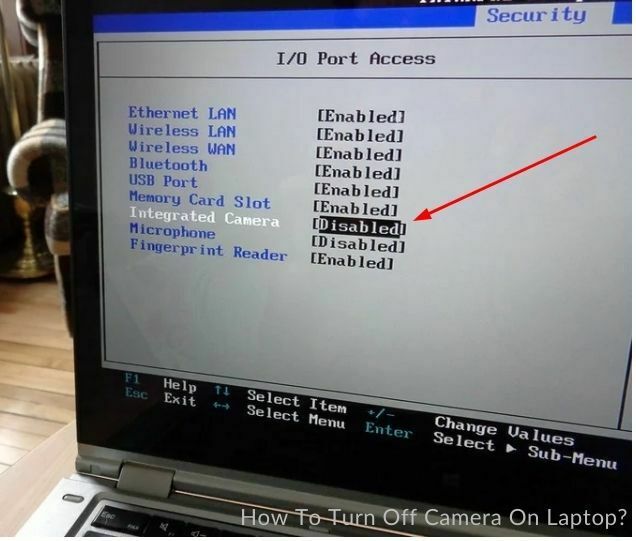
If you own a laptop with an inbuilt camera (or a rare all-in-one desktop computer), you have a few possibilities. If your BIOS enables it, you may deactivate it entirely in the BIOS, which is optimal.
Reboot your laptop and access the BIOS (usually by hitting the F2 key, the DEL key, or some other function key combination).
Look for an item called “webcam,” “integrated camera,” or “CMOS camera” in the BIOS settings.
Typically, these items will include a basic toggle, such as enable/disable or lock/unlock. To turn off your camera, disable or lock the hardware.
Regrettably, the BIOS solution is extremely uncommon and is often found on laptops and desktop computers sold primarily to institutions.
For example, business Dell and Lenovo laptops frequently have this BIOS setting since their corporate customers want the option to deactivate the camera.
It’s hit or miss with other suppliers (and even within laptop lines from the aforementioned companies).
Be aware that deactivating the webcam generally disables the microphone as well, as the camera and microphone modules are typically located on the same tiny expansion board in most laptops.
This is clearly positive (from a privacy aspect), but you should be aware of it to avoid being left wondering why your mic has died.
Disable it in the operating system
This approach is not nearly as safe or foolproof as the last one, but it is a necessary next step. You may disable and remove driver support for your camera to make it inoperable.
While the approach differs from each operating system, the underlying concept remains the same.
In Windows, you just need to open the Device Manager (click Start and type “device manager” into the search box).
There, locate your webcam in the “Imaging Devices” category, right-click it, and select “Disable” or “Uninstall.”
Clearly, this is not an ideal option. If someone has remote administrative access to your system, they can always install the missing drivers and re-enable the device with varying degrees of difficulty.
Except for that level of concentration and dedication, however, disabling your webcam is a simple and straightforward process.
It is, however, somewhat inconvenient if you utilize your integrated webcam consistently. This takes us to the next solution: covering the lens.
Cover It Up
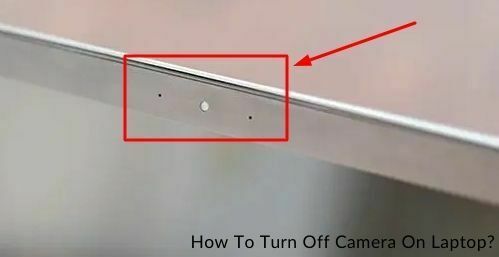
A simple physical cover for your camera lens is a good compromise between the inconvenience of blocking the webcam in the BIOS or operating system and keeping it wide open all the time.
As simple and straightforward as it appears, this is a really successful method.
You receive immediate visual proof that the lens is disabled (you can see the cover whenever you look at your laptop), it’s simple to remove, and we even tested out some dirt-cheap DIY methods to make the cover-up option affordable.
For reference, the laptop we’re now using is shown below without any of the options (commercial or do-it-yourself).
On the left is the indication light, in the middle is the webcam lens, and on the right is the microphone.
Before you rush out to buy a roll of duct tape, let’s go through some of the more handy commercial alternatives.
Portable Privacy Cover (~$9.99)
The Privacy Cover is Amazon’s best-selling and most-reviewed webcam cover. The concept is really straightforward: it consists of a C-shaped plastic clamp that is slipped onto your laptop (it can also be similarly applied to tablets and smartphones).
[amazon box=”B0000DH4ME”]
Without a doubt, it was simple to apply and remove, and as claimed, it lacked any stickiness (so there was no risk of residue).
Additionally, it totally obscured the camera lens on all devices tested. That being said, this item is truly, truly, truly hideous and apparent.
In terms of aesthetics, we’d compare the Privacy Cover to the gigantic fit-over sunglasses you’d see in a retirement community.
Additionally, this is the only gadget we tested that will not function effectively with smart TVs, gaming consoles, or any other bigger device equipped with a webcam-like device.
It will not operate until it is attached to a slim item such as a laptop lid or tablet.
Webcam Cover Slide (~$4.99)
The Webcam Cover Slide is a little (and we mean minuscule) plastic slider that attaches to the bottom of your laptop or tablet. The complete gadget is around the size of a tiny postal label (1.4′′ x 0.5′′ and just about 1mm thick).
Indeed, it was sent affixed to a piece of paper in a standard #10 business envelope, with the exterior of the envelope emblazoned with “Your webcam cover order is inside!” in bold highlighted font to ensure we didn’t discard it as junk mail.
In comparison to the other options in this review, the Webcam Cover Slide is designed to be permanently attached to the device.
You activate and deactivate the camera by sliding the little plastic plate back and forth, similar to how some bigger external webcams have a physical slider that covers the lens when not in use.
[amazon box=”B08CVKRZW9″]
Despite our reservations about the C-diminutive Slide’s size, it functioned rather effectively.
It’s so thin that you can close the laptop completely without seeing any space between the lid and the body. There were just two faults with the Webcam Cover Slide that we discovered.
To begin, if you have a laptop with a curved bezel, it will likely come off quickly (or shortly after application).
Second, you’ll want to position it carefully so that it does not accidentally stick over your laptop’s microphone hole or obscure the indication light. Second, before you peel the back of the double-sided tape and apply it, take a moment to experiment with placement.
Our first location was suboptimal, as it obscured the indication light and resulted in an obstructed microphone while the slider was open.
By slightly displacing the slider opening from the camera lens, we were able to place the device in such a way that the microphone was not obstructed or taped over, and the indicator light was only blocked when the slider was opened to utilize the webcam.
Apart from these minor difficulties, the Webcam Cover Slide works with any camera embedded in a flat surface as long as the camera lens is smaller than the slider’s about square centimeter hole (approximately the size of the nail on your pinky finger).
In general, this was our preferred solution. It’s simple to apply and simple to use: no more picking at a little sticky disk and no more misplaced components.
Cam Covers with a Creative Twist ($10 for 7)
The Eyebloc Cam Covers have the same feel and appearance as cut vinyl decal clings that you can buy from a sign shop or purchase to peel and stick on your car window.
The bundle includes an alcohol wipe and seven black circular clings with a diameter of around a dime. They lack an adhesive and instead adhere to smooth surfaces via static electricity.
This is both a plus (they leave no sticky residue and are simple to remove) and a disadvantage (they work great on smooth surfaces but not so great on textured ones).
As such, they perform exceptionally well on laptops with glossy piano black bezels and tablets with smooth glass bezels, but they may easily slip off if your laptop is made of brushed aluminum (like a MacBook) or has a rough texture on the bezel.
[amazon box=”B08CPRZZJW”]
As a result, we can only propose the product for the following situations: ultra-smooth and flat laptop bezels or glass surfaces similar to those seen on tablets.
None of our laptops had a glossy casing, and the Cam Covers would not adhere to the bezel of the laptop we used for demonstration reasons in this post (even for a fraction of a second).
They did, however, adhere quite nicely to the flawlessly smooth glass surface of our iPad mini, as shown in the accompanying photo.
If you’re searching for a non-adhesive solution for a gloss-bezel tablet or laptop, this is an excellent option.
Self-Adhesive Electrical Tape Covers ($1)
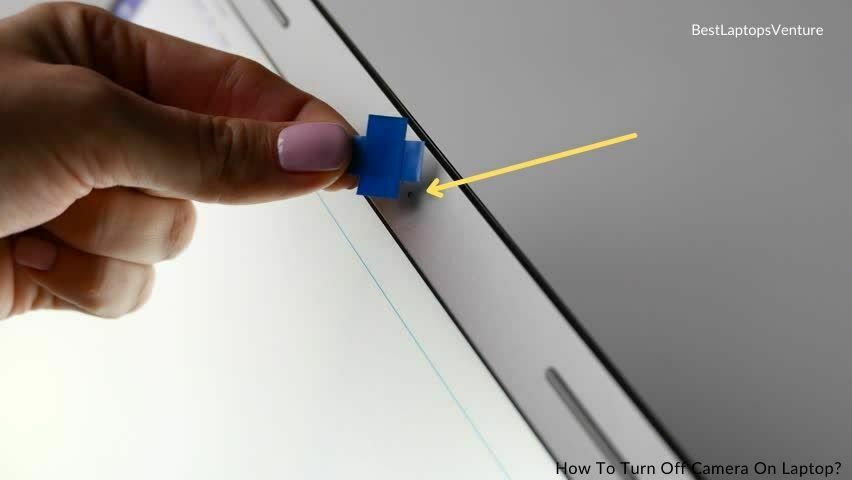
While field testing all of these solutions, it occurred to us that the simplest solution.
If you’re not afraid of a tiny bit of adhesive, would simply punch a hole in a piece of electrical tape with a hole punch, creating a perfectly round little dot that you could place directly over the lens of your integrated webcam.
After a short trip to the old supply cupboard for tape, a hole punch, and a FedEx label (to take part in the non-stick paper backing), we had the components for hundreds of webcam covers.
[amazon box=”B0000AZ9HG”]
The main disadvantage of this approach is that you may encounter some adhesive while removing the dot (although this is mostly a temperature problem since electrical tape leaves little residue when used at lower temps).
Additionally, it would be easy to lose or damage the small dot of tape if you used it while traveling, but considering their low cost, you could simply store a couple in your laptop bag.
Why Should You Disable Your Webcam?
The majority of laptops include built-in cameras, which programs and services may activate automatically provided users grant the necessary rights.
If you’re concerned about privacy, you may wish to disable your laptop’s inbuilt webcam entirely. You do not want malware to take over the camera and begin spying on you and your family.
If you’re a parent, you may have additional reasons for blocking the webcam, all of which pertain to the protection of your children.
Instant chat and interactive websites that make use of laptop cameras are not always suitable for children, and you may decide that deactivating the webcam for a specific website is the best way to safeguard your children and their identities.
There is no way to avoid the security problems raised by your laptop’s built-in webcam.
Disabling the webcam totally is usually the safest course of action, but if any programs require access, you can provide it on a case-by-case basis.
Is Webcam Spying Really a Threat?
Ten years ago, the notion that people—whether government officials, hackers, or law-breaking voyeurs—could deliberately spy on you via your laptop’s webcam would have been dismissed as the crazy ranting of a conspiracy theorist.
However, a series of news reports over the following years have revealed that what was previously dismissed as paranoia has become an unsettling reality.
When a student found that his school-provided laptop was covertly filming him, he filed a lawsuit against his school in 2009. (A legal investigation revealed that the school had taken 56,000 photographs of students without their knowledge or consent).
Researchers proved in 2013 that they could switch on the webcam on MacBooks without turning on the indicator light, something that was previously thought to be impossible to do.
Not only was this concept but it has been done for years, according to a retired FBI agent.
We learned in 2013 from Edward Snowden’s revelations that the NSA had effective programs for gaining backdoor access to the cameras on iPhones and Blackberries.
In 2014, once again as a result of the Snowden revelations, we learned that the NSA has a slew of technologies at its disposal for remotely monitoring individuals, including “Gumfish,” a malware program that enables remote video surveillance via your webcam.
In early 2015, a group called BlackShades was disbanded after it was discovered that the software they sold for $40 per copy was being used to grant millions of purchasers remote access (including webcam access) to victims’ laptops;
This is not a new trick, as older programs like Back Orifice were used in the same manner in the 1990s.
It Isn’t Just the National Security Agency (NSA)
We want to underline the fact that this is not a novel technique and the simplicity with which even slightly trained malevolent people may acquire access to your machine.
Meet The Men Who Spy On Women Through Their Webcams, an article at Ars Technica, is an unnerving experience.
The bulk of that snooping is not government agents, but low-level hackers who employ basic programs to catalog and monitor all devices to which a laptop may have access.
Therefore, before you shrug your shoulders and say, “Well, the NSA doesn’t care about my dull life, therefore it’s irrelevant,” keep in mind that, while we may find claims of government surveillance the most alarming on a global and intellectual level, the bulk of real webcam spying is conducted by creepy Peeping Toms.
In a nutshell, webcam snooping is a genuine concern. When everyone from NSA spies to the child next door has access to technologies capable of turning a webcam against its owner, the threat is real.
Read more: How to right-click on your laptop



